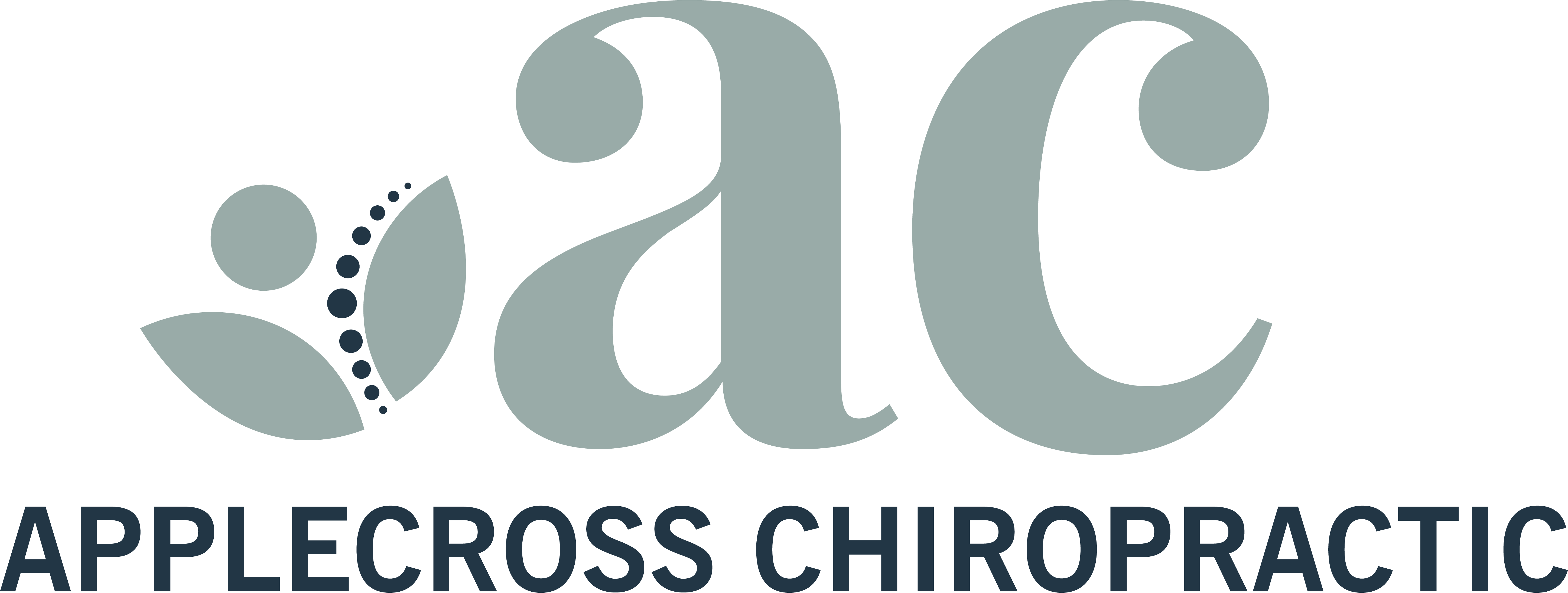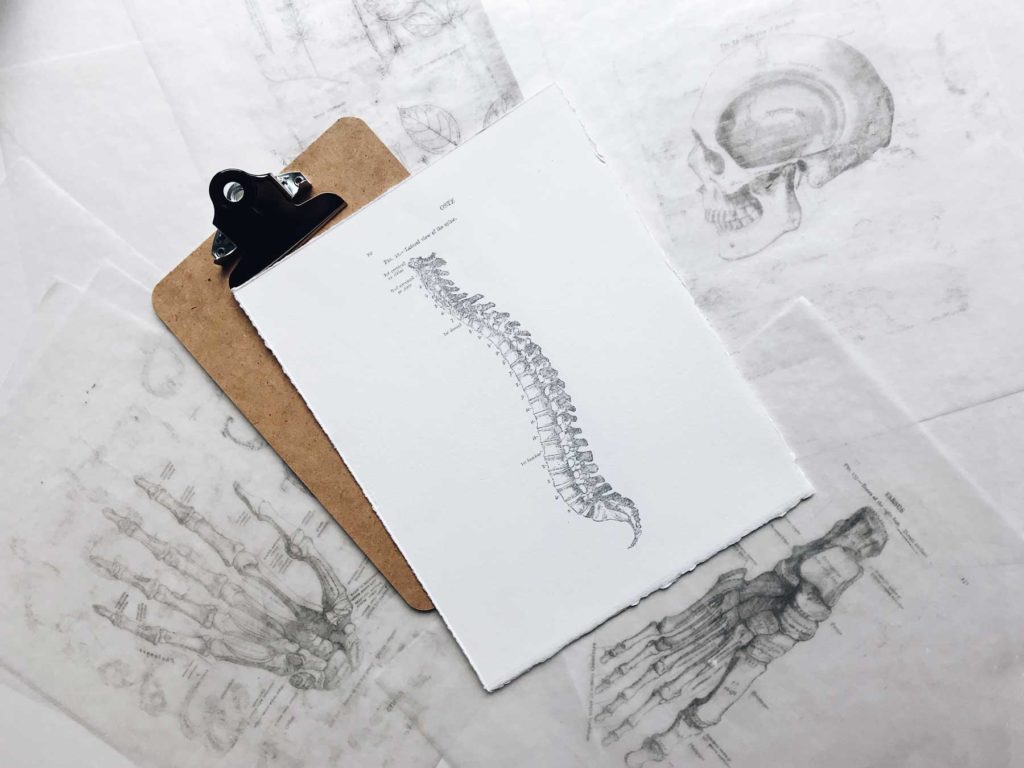The human backbone (spine) normally consists of 24 blocks of bone (vertebrae) stacked in a column with flexible pads in between (discs). There are no discs between the top two neck vertebrae. There are normally five more fused to form the base of the spine (sacrum) and four fused to form the tailbone (coccyx).
When viewed from front to back, the spine should appear straight and when viewed from the side, the neck should have a forward curve (lordosis), the middle of the back should have a backward curve (kyphosis) and the lower back should have a forward curve similar to the neck (lordosis).
When we are born our spines have a “C” shaped foetal/primary curve and the three distinct adult/secondary curves develop as a result of gravitational forces from our upright and walking posture as we grow and mature.
The first curve to develop is the neck curve and it develops in response to the baby learning to lift its head, sit and then crawl.
The lower back curve develops as the baby learns to stand and then walk near the end of the first year of life. The mid-back curve is already present as part of the C-shaped curve we are born with. It is very important to let these curves develop naturally so the baby will have a healthy spine.
The three curves of your spine are important because they actually allow the spine to support more weight than if it were straight. This is because the curves increase resistance to axial compression – that is, a head-to-toe squishing of the spine.
With normal spinal position and movement, the spine does not create adverse effects on the nerves. However, when overall or localised changes in spinal movement or position occur the nerves can function differently.
Many people feel this change as discomfort or pain and attend a chiropractic clinic for treatment to correct the misalignment and consequently relieve the pain.
Sometimes the nerves ‘feel’ the pain further down the nerve from the actual problem area and this is referred to as ‘radiating’ to another region. Such as low back problems causing radiating sciatic pain all the way down the leg.
Occasionally patients don’t feel much pain but suffer weakness instead. This is because not all nerves do the same job, for example, if a problem occurs that alters the function of a nerve controlling someone’s ability to feel what they’re holding or their muscle strength they will not be able to hold on to the object properly and may drop it.
Thus spinal problems may cause a range of problems and some may seem quite unrelated to the spine until an assessment verifies if the spine is the cause.
An interesting concept is when nerves are affected that control areas of the body other than muscles or pain sensors. Many people report a seemingly unrelated illness that failed to respond to previous health care, improved when getting chiropractic care for another reason.
Chiropractic care is not only of benefit for the ‘bad back’ and extremity problems (knees and shoulders) but may be of benefit in many other internal (visceral) conditions.
When under the proper control of the nervous system, all the cells, tissues, and organs of your body are designed to resist disease and ill health.
The chiropractic approach to better health is to locate and help reduce interference to your natural state of being healthy.
Common interferences to the nervous system occur between some of the 24 moving bones of the spinal column. A loss of normal motion or position of these bones can irritate or impair the function of the nervous system.
This can disrupt the transmission of controlling nerve impulses. With improved spinal function people often report improved organ and system function. Your chiropractor can help remove any interference that may be impairing normal health.
Through specialist, drug-free spinal health care, expertise in the diagnosis and management of spinal health, and the provision of expert advice, chiropractors can play an important part in helping Australians lead and maintain healthy lives.
Not all problems are spine-related so a chiropractor does a complete physical and neurological assessment to determine if there are any signs or symptoms that indicate if a different type of care may be needed.
Book an appointment to discuss how Chiropractic care may help you.




